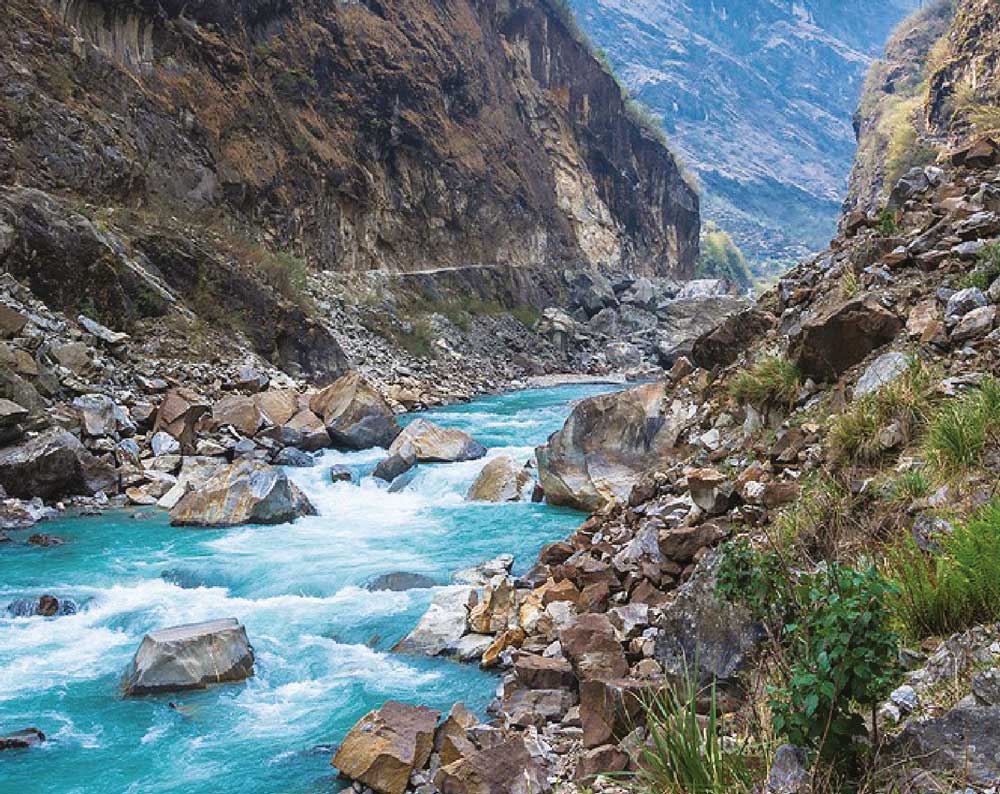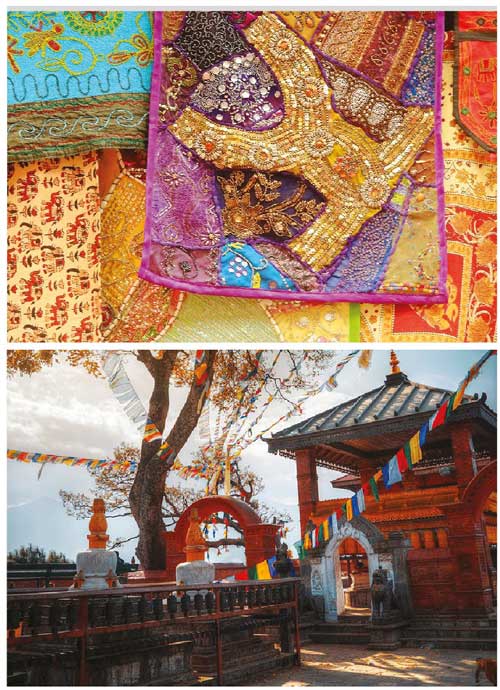HIMALAYAN KINGDOM
Wish you were here
Trekkers’ delight
Sandip Hor is overawed as he learns about Nepal’s history and culture

Often referred to as a ‘trekkers’ delight,’ Nepal links spectacular Himalayan mountain views with the holy ambience of Buddhist and Hindu temples, charming hillside villages and friendly people. It is one of the world’s most fascinating travel destinations with Kathmandu Valley as its nucleus.
Home to the three ancient settlements of Kathmandu, Patan and Bhaktapur, the valley boasts several monuments, sculptures, stupas, temples and magnificent works of art. These are reminders of the golden era of Nepal’s history, which thrived during the reign of the Malla dynasty between the 12th and 18th centuries.
Tucked into a hilly region near the confluence of the Bagmati and Bishnumati Rivers – and at an elevation of 1,324 metres above sea level – present-day Kathmandu is Nepal’s capital and the gateway city for international visitors.
The settlement, which was founded in the 8th century, was badly hit by a major earthquake in 2015. Displaying a grand blend of old and new, the city shows signs of having recovered well, and welcomes visitors from around the world to enjoy its cultural and natural treasures.
WHERE TO STAY There’s no shortage of accommodation in Kathmandu to suit all tastes and budgets, and this ranges from five-star hotels to modest backpacker inns.
The Soaltee Kathmandu is one of the city’s oldest luxury properties. It’s a homegrown brand and is considered the epitome of Nepalese hospitality where the nation’s rich cultural legacy blends with style and elegance. The other hotel worth noting is the Shangri-La Boutique Hotel where every stay is an experience of heartwarming cordiality and local charm.
WHAT TO EAT The local food is spicy as it has been influenced by cuisine from neighbouring India and China with some steamy touches from Tibet. Dal bhat tarkari is the most common food combo comprising boiled rice served with spicy lentils and vegetable curries, and supplemented by meat or fish dishes.
Another item not to be missed is the momo, which comes as a dumpling that’s either steamed or deep-fried. Chataamari is a popular Nepalese pizza. And gundruk, which is Nepal’s national dish, is an assortment of pickled leafy green vegetables that’s relished as a condiment with main meals.
Bustling Thamel is home to narrow alleyways. It is also the city’s food hub where locals and visitors gather to taste authentic Nepalese food.

WHERE TO SHOP Things to buy in Kathmandu include quality pashmina shawls, singing bowls, beads and jewellery. Thangka paintings are unique portraits on cotton and silk fabrics depicting mainly Buddhist and Hindu deities.
And Nepalese handicrafts range from wooden to metallic products, masks, sculptures, statues of Lord Buddha and Hindu deities, puppets and dolls, prayer wheels, pottery and trinkets.
Shops in Thamel and around the city’s main square sell these items.
WHERE TO GO Any itinerary for Kathmandu begins at the UNESCO World Heritage Site Durbar Square, which proudly presents more than 50 architectural masterpieces in the form of temples and palaces. Many were damaged during the earthquake but are being carefully rebuilt.
Most buildings feature the pagoda pattern of architecture. But the square’s most significant monument is the Taleju Temple, which represents the shikhara style that originated in North India. Another revered temple is the Kumari Bahal or temple residence of the living goddess.
Durbar Square also hosts the old royal palace Hanuman Dhoka. Its name is derived from the statue of the legendary Lord Hanuman at the entrance. Visitors enter the palace and visit the museum, which showcases royal memoirs.
Other sites include the Pashupatinath Temple, and the Swayambhunath and Boudhanath stupas. Patan and Bhaktapur are not far from Kathmandu, and are worth visiting to see well-preserved medieval architecture.





